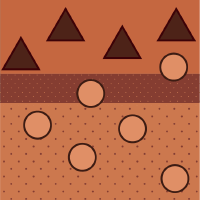Topic Editors



Advances in Separation Engineering
Topic Information
Dear Colleagues,
This Topic focuses on a wide range of topics relevant to cutting-edge research, new technologies, and emerging growth areas in separation engineering. It strongly promotes international academic exchanges and collaborations. It is intended to bring together investigations from multiple disciplines to discuss recent advances in separation engineering. Topics of interest include, but are not limited to, the following:
- Chromatography;
- High-Performance Liquid Chromatography (HPLC);
- LC-MS;
- LC-MS/MS;
- GC-MS;
- Phase equilibria;
- Transport phenomena;
- Distillation and absorption;
- Extraction;
- Crystallization;
- Membrane separation;
- Bioseparation;
- Capillary Electrochromatography (CEC);
- Capillary Electrophoresis;
- Gel Electrophoresis;
- Immunoelectrophoresis;
- Isoelectric Focusing (IEF);
- Isotachophoresis (ITP);
- Sedimentation;
- Filtration;
- Flotation;
- Coagulation and flocculation;
- Electrocoagulation;
- Electroflotation;
- Centrifugation;
- Screening;
- Gravity thickening;
- Disinfection;
- Activated carbon;
- Hydrocyclones.
Prof. Dr. Anyun Zhang
Dr. Salman Soltani
Dr. Maria Atanassova
Topic Editors
Keywords
- separation engineering
- separation technology
- separation science
- chromatography
- extraction
- purification
- LC-MS
- GC-MS
- LC-MS/MS
Participating Journals
| Journal Name | Impact Factor | CiteScore | Launched Year | First Decision (median) | APC | |
|---|---|---|---|---|---|---|

Clean Technologies
|
4.7 | 8.3 | 2019 | 33.7 Days | CHF 1600 | Submit |

Molecules
|
4.6 | 8.6 | 1996 | 16.1 Days | CHF 2700 | Submit |

Processes
|
2.8 | 5.5 | 2013 | 16 Days | CHF 2400 | Submit |

Separations
|
2.7 | 4.5 | 2014 | 16.3 Days | CHF 2600 | Submit |

Water
|
3.0 | 6.0 | 2009 | 19.1 Days | CHF 2600 | Submit |

Membranes
|
3.6 | 7.9 | 2011 | 17 Days | CHF 2200 | Submit |

Environments
|
3.7 | 5.7 | 2014 | 19.2 Days | CHF 1800 | Submit |

Preprints.org is a multidisciplinary platform offering a preprint service designed to facilitate the early sharing of your research. It supports and empowers your research journey from the very beginning.
MDPI Topics is collaborating with Preprints.org and has established a direct connection between MDPI journals and the platform. Authors are encouraged to take advantage of this opportunity by posting their preprints at Preprints.org prior to publication:
- Share your research immediately: disseminate your ideas prior to publication and establish priority for your work.
- Safeguard your intellectual contribution: Protect your ideas with a time-stamped preprint that serves as proof of your research timeline.
- Boost visibility and impact: Increase the reach and influence of your research by making it accessible to a global audience.
- Gain early feedback: Receive valuable input and insights from peers before submitting to a journal.
- Ensure broad indexing: Web of Science (Preprint Citation Index), Google Scholar, Crossref, SHARE, PrePubMed, Scilit and Europe PMC.

